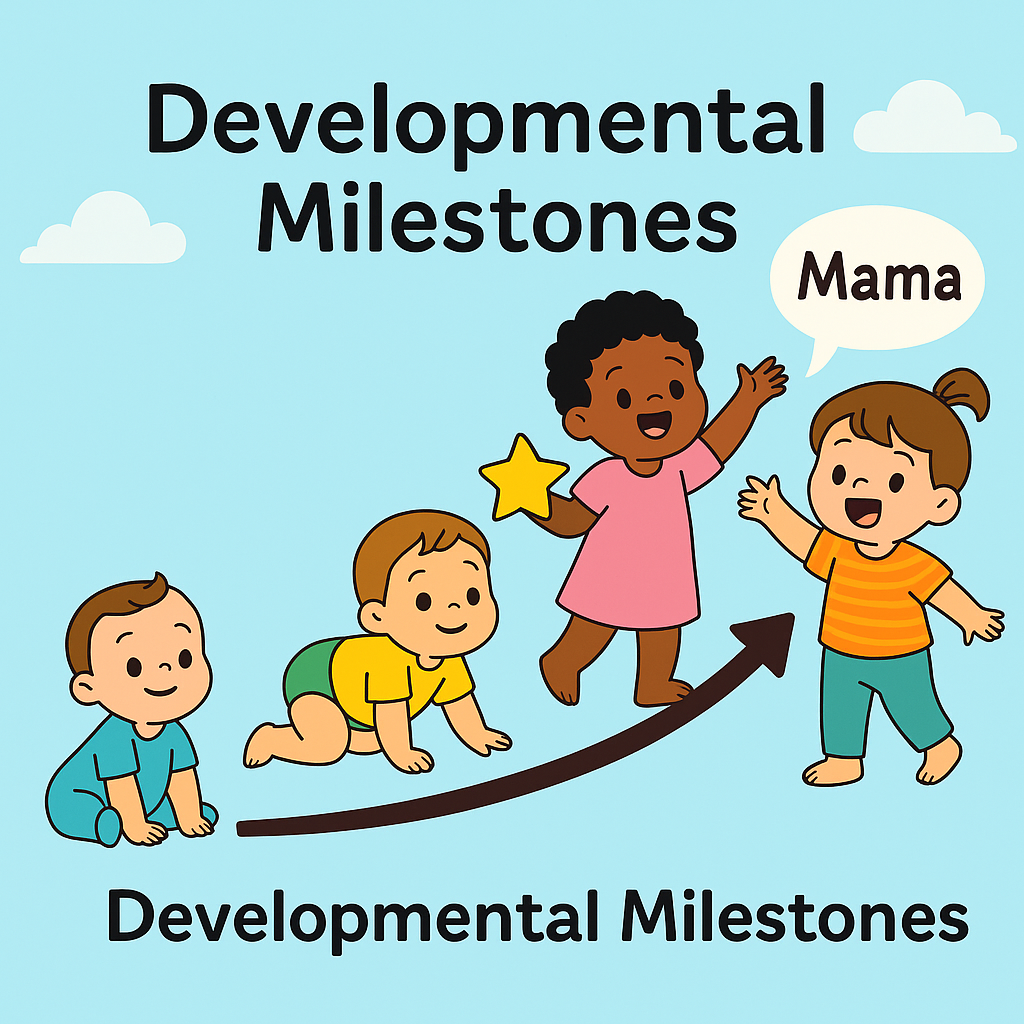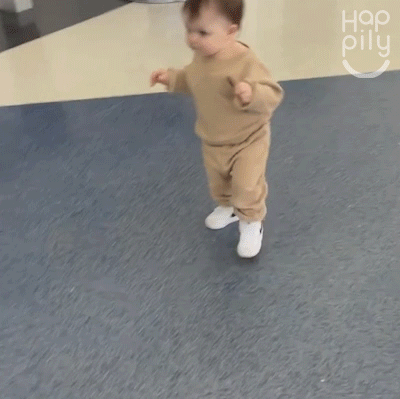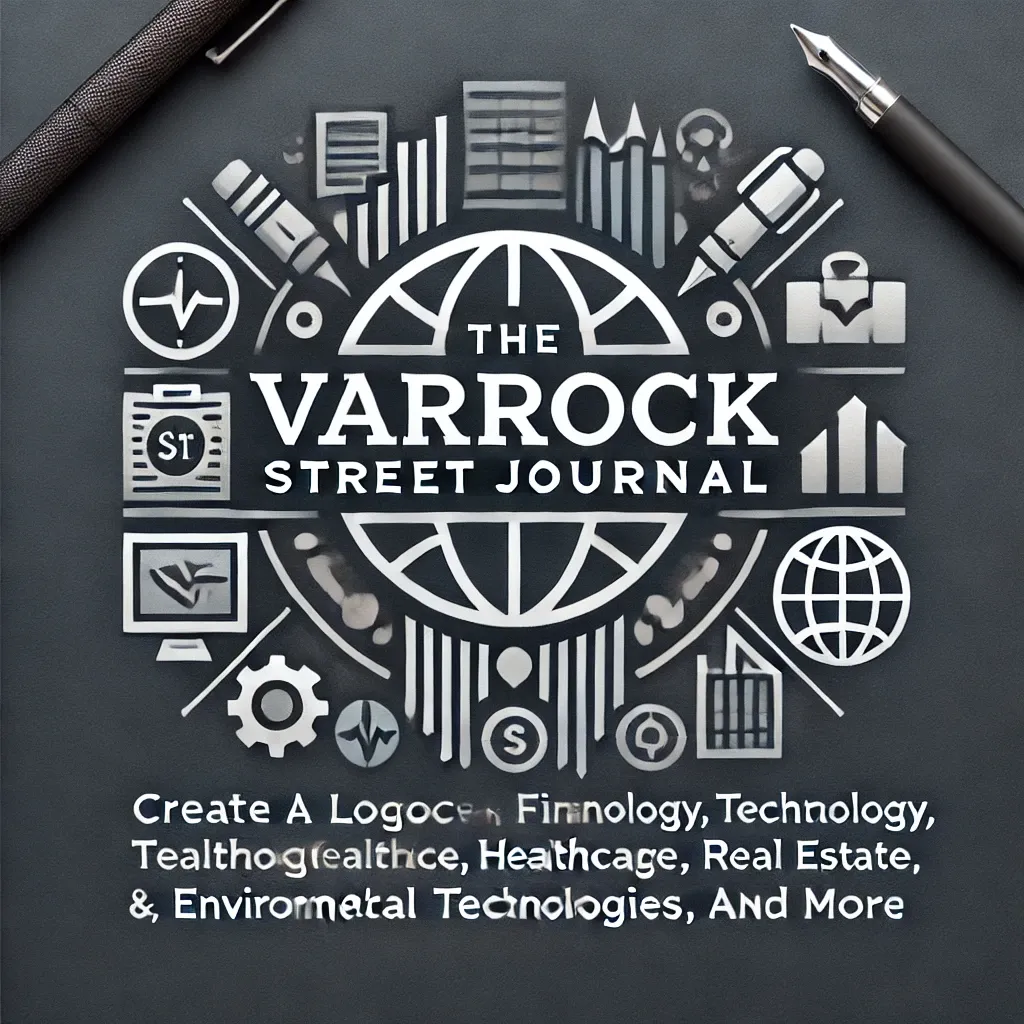🍼 First Steps, First Words: A Guide to Pediatric Milestones

Health & Sciences | The Varrock Street Journal
Welcome Back Varrock Street Journal readers!
This week will conclude the last of our pediatric adventures for now, future content will still include pediatric-related material, just not in a continuing format as it has been for the past several weeks, as my rotation is coming to a close. This week, I wanted to focus on a more positive topic that everyone, including doctors and parents, is always discussing and monitoring. I hope you will enjoy our lesson and today's topic.
Every parent remembers their baby’s first smile, the wobbly steps across the living room, or that joyful moment when “mama” or “dada” is finally said. These little moments mark big achievements known as developmental milestones—key checkpoints in a child’s growth.
This week, we're walking through the importance of milestones, what they look like across different ages, when to be concerned, and how health professionals track and support childhood development. Whether you’re a caregiver, healthcare provider, or just a curious reader, understanding these milestones helps us support kids during their most important years.

📊 What Are Developmental Milestones?
Developmental milestones are skills or abilities most children achieve by a certain age. These include:
- Gross motor (e.g., crawling, walking)
- Fine motor (e.g., picking up small objects)
- Language (e.g., babbling, speaking in sentences)
- Social-emotional (e.g., playing with others, showing affection)
- Cognitive (e.g., following simple commands, problem solving)
They're not rigid deadlines, but guides that help track a child's progress and catch delays early.
📅 Key Milestones by Age
Here’s a snapshot of some core developmental milestones:
👶 0–6 Months
- Smiles spontaneously (6–8 weeks)
- Begins babbling and cooing
- Rolls over front to back
- Reaches for and grasps toys
🐾 6–12 Months
- Sits without support
- Crawls or scoots
- Babbles with consonants ("ba-ba," "da-da")
- Develops stranger anxiety
🚶 12–18 Months
- Takes first steps
- Points to request things
- Begins saying single words
- Waves “bye-bye”
🧒 2 Years
- Combines 2 words (“want milk”)
- Runs and climbs stairs with help
- Plays simple pretend games
- Begins to show independence (“No!” phase)
👧 3–4 Years
- Speaks in full sentences
- Pedals a tricycle
- Knows name and age
- Plays cooperatively with peers
🧠 5+ Years
- Can draw shapes and write letters
- Hops, skips, and catches a ball
- Understands rules and routines
- Begins learning empathy and emotional control
🧬 Why This Matters
Developmental milestones aren't just checkboxes—they reflect how the brain, body, and behavior are coming together. Delays can signal underlying concerns such as autism spectrum disorder, cerebral palsy, hearing impairment, or language delays.
That’s why pediatricians screen for milestones at every well-child visit using tools like the Ages & Stages Questionnaire (ASQ) or the CDC’s developmental checklists.
A 2-year-old child is brought to the pediatrician because they are not yet speaking words and seem to ignore their name when called. The parent reports that the child also hasn’t started pointing at objects or imitating actions, and seems behind in both social and language milestones. What is the most likely underlying issue to consider first? A) Autism Spectrum Disorder
B) Global Developmental Delay
C) Hearing Impairment
D) Intellectual Disability
🩺 Risk Factors for Developmental Delay
Some children may be at higher risk for delayed milestones due to:
- Premature birth or low birth weight
- Lead exposure
- Neurological conditions
- Genetic or chromosomal abnormalities (e.g., Down syndrome)
- Lack of stimulating interaction or safe environments
But early detection + early support = better outcomes.
🧠 Outcomes, Life, and Support
Many developmental delays are temporary or mild, especially in speech and motor skills. For others, early therapy can change a child’s entire life path.
Treatment options and supports include:
- Speech therapy
- Occupational and physical therapy
- Early intervention programs (like IDEA Part C in the U.S.)
- Developmental pediatrics and specialized education plans
Most importantly, families are not alone. A multidisciplinary team can guide parents toward the right resources, therapies, and encouragement to help children thrive—no matter their starting point.
Here is a video if you want to learn more!
😲 Did You Know?
- By 6 months, a baby’s brain has already reached half the size of an adult brain.
- 1 in 6 children in the U.S. has a developmental delay or disability.
- The earlier therapy starts, the greater the chance of catching up—especially in speech and motor domains.
✅ Correct Answer: C) Hearing Impairment
Explanation: Hearing loss is a common but often overlooked cause of delayed speech and social milestones. Children with undiagnosed hearing impairment may appear unresponsive and struggle to develop language, making early hearing screening essential!
📚 References
Centers for Disease Control and Prevention. (2023). Developmental Milestones. https://www.cdc.gov/ncbddd/actearly/milestones/
Zubler, J. M., et al. (2022). Evidence-Informed Milestones for Developmental Surveillance Tools. Pediatrics, 149(3). https://doi.org/10.1542/peds.2021-052138
American Academy of Pediatrics. (2021). Identifying Infants and Young Children With Developmental Disorders in the Medical Home. https://pediatrics.aappublications.org/
👋 Final Thoughts
From first steps to first sentences, each milestone tells a story—not just about a child's body and brain, but about the community that nurtures their growth. Let’s celebrate progress, empower parents, and make sure every child gets the support they need to shine.

📲 Keep growing with us:
- Instagram: @thevarrockstreetjournal
- TikTok: @varrock.street.jo
